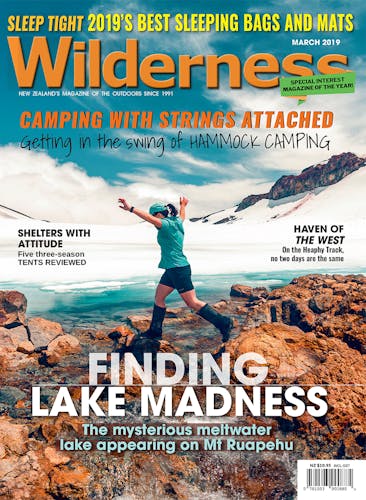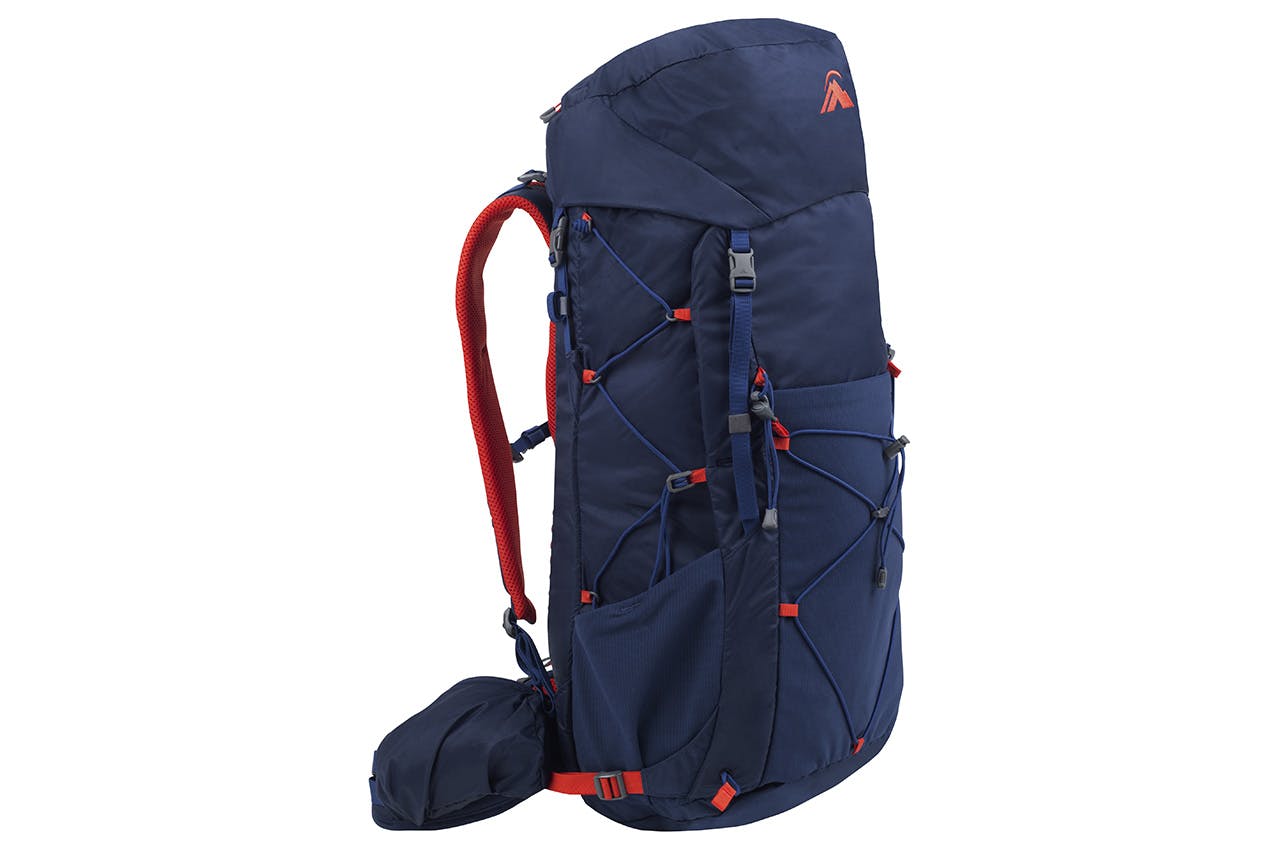Letter of the month
Moving from the fast lane
Five years ago I left New Zealand to move to London. I thought it was the right thing to do for my career, to live in the fast lane and grow culturally. And while I ticked those boxes, when I set sail I underestimated how nourishing is the New Zealand outdoors.
Living in the big city, I couldn’t shake the memories of breathlessness from scrambling up mountains, the restorative silence of grassy flats or the thrill of spotting colourful native birds. In the end, I couldn’t shake the memories enough and decided last month to pack it all in and return to our shores.
After a weekend hiking in Mt Aspiring National Park, I already feel that though I have given up a lot, I am set to gain a whole lot more. As a new reader, I am delighted to have Wilderness on my side and the article ‘The touch of the wild’ couldn’t have felt more poignant, timely and uplifting.
I can’t wait to continue to explore, learn and grow in our great outdoors. New Zealand really is a special place, we would all do well to seize every moment and every trail we can in it.
– Olivia Jordan, Wellington
– Olivia receives a Macpac Fiord 40 pack worth $299.99 from www.macpac.co.nz. Readers, send your letter to editor@lifestylepublishing.co.nz for a chance to win.
Share the prize around
Regarding the Wilderness Super Summer Subscription promotion, who needs $5000 worth of gear? I understand that you are dangling a carrot to get more subscribers, but the majority of folk who read Wilderness already have a pile of kit and to award such a huge amount to just one person is, I suggest, overkill.
I would be much more likely to subscribe if there was a prize of $1000 worth of kit going to five new members.
Share the prize, I say, and let more people have the enjoyment of trying top class gear – honestly, no person needs all that gear in one go!
– Jane Baker, email
– Thanks for your feedback Jane, we’ll take it under consideration for future promotions. -AH
Lake Waikaremoana experience
Mike Miller’s letter ‘Lake Waikaremoana not so Great’ was interesting to read after my own visit to Lake Waikaremoana.
Similar to Miller’s experience, we did have some challenges with the visitor infrastructure.
We hunted for the information centre as marked on topo maps, and also on map boards near the site, to find a new information centre has been built a few kilometres away. I understand this happened 18 months ago and feel that updating local map boards and erecting a sign with directions to the new facility would be helpful.
The centre is a beautifully-designed building and will be a great centrepiece to the park once the café is complete and the iwi taonga are on display. We found the staff to be friendly and helpful, and enjoyed their pride in sharing plans for the centre and its development. However, I wonder if the centre is short staffed as it is closed from 12-2pm, and our daily phone calls for over two weeks were not answered nor voice messages returned.
It was a shame that on meeting other trampers around Lake Waikareiti, the topic of conversation wasn’t the stunning forest and lake, but confusion and disappointment around the rowboats. Many had booked but somehow missed out, or been told they couldn’t row the lake only to find others were.
On the bright side, our kids loved being rowed to Sandy Bay Hut for the night. I walked back around the lake the next morning and soaked-in the peacefulness of the extremely impressive forest. This area is certainly a taonga deserving of special status and return to iwi guardianship. Meanwhile, the weary tramper who was disappointed to have missed out on her pre-booked rowboat proved to be good company for my family rowing back across the lake.
– Tui Holbrook, email
Watch your step
I don’t recommend anyone follow the advice in the article ‘Foot Confidence’.
I think the advice provided is a suicidal approach to walking in the bush. One’s feet only know what they are doing on rough ground if they are guided by one’s eyes, and for that to happen one has to look down.
Trust your common sense and look where you are putting your feet, or you might end up dead!
– Stephen Conn, email
Type 3 or 1 nudity
The article ‘The naked truth’ and the three types of nudity described, made me smile because it put me in mind of an incident in the changing room at my local swimming pool.
I swim with a club and one of my club mates and I were getting changed, chatting away and completely comfortable in our nakedness. Then we looked over and saw a mutual friend from our book group, coyly covering herself with a towel.
My fellow swimmer remarked: “It’s always awkward seeing non-naked friends naked.”
In other words, Type 3 nudity that comes across as Type 1 for others. Although, admittedly, that’s only with other females. Much as I’m used to seeing and being seen by fellow male swimmers in next to nothing, I’m not sure how I’d feel about the complete absence of togs.
Thank you for a great read which always provides something to add to my list of to-dos.
– Kathryn Treeby, email
Manu challenge
I often wonder what people think about as they’re walking in the bush. One thing my partner and I like to do is mental challenges. Sometimes we make up limericks as we go or we challenge each other’s flora knowledge. The latest challenge is learning and remembering the names of our native birds in Māori.
While stopping for lunch as we headed up Parapara Peak, a bush robin perched on my partner’s boot.
“What’s its Māori name,” he asked. I replied, quite proudly after some mental digging, “Toutouwai.”
Learning the names of our bird species in Māori is a great thing to do. It helps keep the language alive, after all, these names were assigned long before their English names were. My intention is to now think of these birds names only in Māori. Somehow, titipounamu (small treasure) is so much more fitting for this little manu (bird) than rifleman.
– Jeana Packer, email
Walking with son and daughter
A year ago, I read Pat Barrett’s article ‘More than a meander’, in which Barrett discussed a tramp that he did to Manuka Hut with his daughter Dominique, who has Down Syndrome.
Our son has Down Syndrome and we have taken him on many tramps around the middle of the North Island. He is now 13 and starting to becoming more confident in the outdoors.
I hope that Barrett’s family continue to enjoy their tramping.
– Wynford Lewis, email








